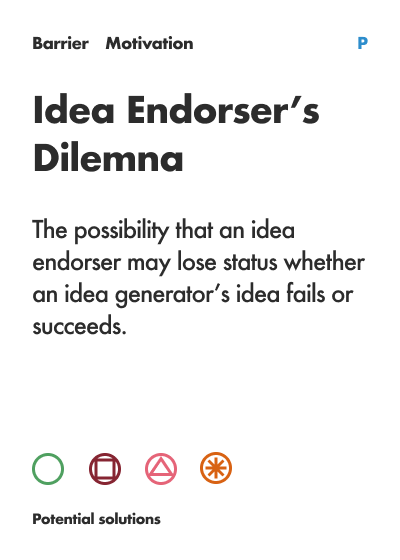
It’s not always the idea’s fault. Sometimes, it’s the manager’s.
In many organizations, innovation programs begin with excitement — idea challenges, digital platforms, rewards for creativity. Yet months later, the flow of new ideas slows. Submissions cluster near year-end, when KPIs are due, or when event's like hackathons draw attention.
Part of the answer lies in behavioural economics. Managers — the gatekeepers of innovation — face what researchers call “The idea endorser’s dilemma.”
Endorsing a creative idea is risky. If the idea fails, a manager loses status. If it succeeds, the employee gains more recognition than the manager.
In other words: loss aversion meets status dynamics.

Managers intuitively know this. Rejecting an idea feels safer — it preserves their standing. Over time, this creates a status quo bias, reinforced by System 1 thinking: automatic, protective, and emotionally driven. This type of thinking frequently happens when we are presented with too much information and not enough time to make a decision, a very common scenario for managers.
According to Makeit's Fourth Law of Behaviour (B = MAP), change happens when we increase motivation (M), ability (A), or add a timely prompt (P).

So, how can we reduce the fear of status loss and unlock idea flow?

Incentives drive innovation, but so does psychological safety and status security.
If creativity threatens status, innovation will likely always stall at the manager’s desk.
The good news? With the right design — one that honours both ambition and anxiety — even the most cautious manager can become an ally to change.